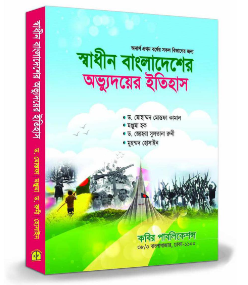
History of Emergence of Independent of Bangladesh
1. Description of the country and its people.
a. Geographical features and their influence.
b. Ethnic composition.
c. Language.
d. Cultural syncretism and religious tolerance.
e. Distinctive identity of Bangladesh in the context of undivided Bangladesh.
2. Proposal for undivided sovereign Bengal and the partition of the Sub Continent, 1947.
a. Rise of communalism under the colonial rule, Lahore Resolution 1940.
b. The proposal of Suhrawardi and Sarat Bose for undivided Bengal : consequences
c. The creation of Pakistan 1947 .
3. Pakistan: Structure of the state and disparity.
a. Central and provincial structure.
b. Influence of Military and Civil bureaucracy.
c. Economic , social and cultural disparity
4. Language Movement and quest for Bengali identity
a. Misrule by Muslim League and Struggle for democratic politics.
b. The Language Movement: context and phases
c. United front of Haque–Vasani–Suhrawardi: election of 1954, consequences.
5. Military rule: the regimes of Ayub Khan and Yahia Khan (1958-1971)
a. Definition of military rules and its characteristics.
b. Ayub Khan’s rise to power and characteristics of his rule (Political repression, Basic democracy,
Islamisation)
c. Fall of Ayub Khan and Yahia Khan’s rule (Abolition of one unit, universal suffrage, the Legal
Framework Order)
6. Rise of nationalism and the Movement for self determination.
a. Resistance against cultural aggression and resurgence of Bengali culture.
b. Sheikh Mujibur Rahman and the six point movement
c. Reactions : Importance and significance
d. The Agortola Case 1968.
7. The mass- upsurge of 1969 and 11 point movement: background, programme and
significance.
8. Election of 1970 and the Declaration of Independence by Bangobondhu
a. Election result and centres refusal to comply
b. The non co-operation movement, the 7th March , Address , Operation Searchlight
c. Declaration of Independence by Bangobondhu and his arrest
9. The war of Liberation 1971
a. Genocide, repression of women, refugees
b. Formation of Bangladesh government and proclamation of Independence
c. The spontaneous early resistance and subsequent organized resistance (MuktiFouz, MuktiBahini,
guerillas and the frontal warfare)
d. Publicity Campaign in the war of Liberation (Shadhin Bangla Betar Kendra, the Campaigns
abroad and formation of public opinion )
e. Contribution of students, women and the masses (Peoples war).
f. The role of super powers and the Muslim states in the Liberation war.
g. The Anti-liberation activities of the occupation army, the Peace Committee, Al-Badar, Al-Shams,
Rajakars, pro Pakistan political parties and Pakistani Collaborators , killing of the intellectuals.
h. Trial of Bangabondhuand reaction of the World Community.
i. The contribution of India in the Liberation War
j. Formation of joint command and the Victory
k. The overall contribution of Bangabondhu in the Independence struggle.
10. The Bangabondhu Regime 1972-1975
a. Homecoming
b. Making of the constitution
c. Reconstruction of the war ravaged country
d. The murder of Bangabondhu and his family and the ideological turn-around.
| Responsible | Nasrin Khanum Khushi |
|---|---|
| Last Update | 08/13/2022 |
| Completion Time | 6 hours 30 minutes |
| Members | 1 |
-
Chapter 1
-
১৯৬৯ র গন অভ্যুথান ও ১১ দফা আন্দোলন
-
-
Chapter 2
-
অখণ্ড স্বাধীন বাংলা রাষ্ট্র গঠনর প্রয়াস ও উপমহাদেশ
-
অখণ্ড স্বাধীন বাংলা রাষ্ট্র গঠনের প্রয়াস ও উপমহাদেশের
-
-
Chapter 3
-
দেশ ও জনগুষ্ঠির পরিচয়
-
-
Chapter 4
-
পাকিস্তান ঃ রাষ্ট্রীয় কাঠামো ও বৈষম্য
-
-
Chapter 5
-
short form
-
-
Chapter 9
-
মুক্তিযুদ্ধ , ১৯৭১
-